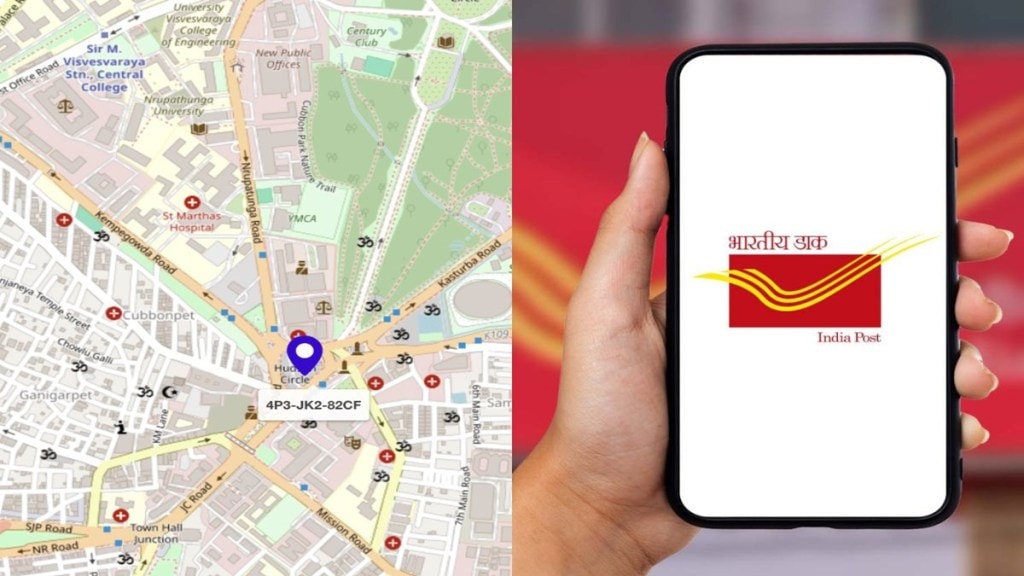By Rakesh Verma
India Post has launched an open-source, interoperable, geo-coded and grid-based digital address system called Digipin, which can be used offline also. Once integrated with navigation apps, it can be India’s ultimate addressing solution, explains Rakesh Verma
What is the concept behind Digipin?
Digipin or Digital Postal Index Number has been developed by the ministry of communications’ department of posts in collaboration with IIT Hyderabad and National Remote Sensing Centre, under the Indian Space Research Organisation, as part of the initiative to establish a Digital Public Infrastructure (DPI) for a standardised, geo-coded addressing system in India. It is the foundational layer of the DPI. At its core, Digipin transforms complex geo-location data into a simple, easy-to-use 10-character code based on latitude and longitude coordinates, uniquely identifying every corner of the country—even those tucked away in remote villages or bustling informal settlements. It simplifies address management by providing precise location-based identification, especially in areas with unstructured or changing addresses, or where no clear address exists, such as forests and oceans. The codes are independent of changes in infrastructure or street names. Even if a new building is constructed, the Digipin of the location remains the same.
What is the basis of the alphanumeric code?
Digipin is visualised as an alpha numeric offline grid system that divides the geographical territory of India into ~ 3.8 m x 3.8 m grids. A bounding box is used that covers the entire country. The bounding box is split into 16 regions. Each region is then subdivided into 16 sub-regions in a similar fashion. The encoding of successive characters, and therefore the next eight levels is done in an identical fashion to get to the 3.8 m x 3.8 m grid level. Each of these grids is assigned a unique 10-character alphanumeric code, using the following 16 symbols: 2, 3, 4, 5, 6, 7, 8, 9, C, J, K, L, M, P, F, T, derived from the latitude and longitude coordinates of the unit. Once postal addresses start incorporating the Digipin code, the power of this new geo-location system will be fully realised.
How can you find your location code?
Login or signup is not needed to fetch the Digipin of one’s location. The user just has to provide location access in the device to fetch the Digipin value of the location. However, the device should have Global Navigation Satellite System (GNSS) facility to find the exact latitude and longitude, which can then be converted into a Digipin code. The department of posts has shared the programming code for Digipin logic in public domain for fetching and decoding the Digipin. Since it is an offline system, once the Digipin is generated, it can be shared and used without the need for an internet connection. Any navigation app, including our Mappls app, can integrate this technology, allowing users to simply enter a Digipin and instantly view the location on the map.
How last-mile issues can be solved with this
For ordinary citizens, Digipin is a game-changer. Whether in a sprawling metro or a secluded hamlet, anyone can now share an exact digital location—bringing services, deliveries, and help right to their doorstep. For companies—especially in logistics, emergency response, fintech, and utilities—Digipin is the precision tool they’ve long needed. While it does not replace postal addresses, it offers an additional digital layer of precision. It eliminates guesswork, reduces delays, and enhances service accuracy dramatically, especially when it comes to last-mile access. This will certainly help reduce costs for logistics firms as time and fuel will not be wasted in locating addresses. It can help emergency services reach the exact spot more quickly, especially in disaster-prone or remote areas. Since it includes India’s maritime Exclusive Economic Zone, it will allow provision of addresses to Indian assets in the sea (oil rigs, future man-made islands, etc.), or even potentially be used to locate regions in the sea.
Adding to India’s geospatial knowledge stack
India’s homegrown satellite system, NavIC, is emerging as a beacon of independence and accuracy. With its regional focus, NavIC outperforms many global systems within India—offering unmatched precision. When fused with Digipin, the result is truly extraordinary. We now have a fully Indian stack: satellite-powered geolocation combined with a nationally standardised digital address layer. Digipin adds to the geospatial knowledge stack of the country in line with the National Geospatial Policy 2022, which seeks to strengthen the geospatial sector to support a thriving information economy. It translates raw latitude and longitude data into a smart, intuitive code—bridging the gap between data and daily life. For planners, innovators, and enterprises, this becomes the new backbone of spatial intelligence. This isn’t just about maps—it’s about giving every Indian a digital identity for their physical location, no matter where they live.
The writer is co-founder and CMD, MapmyIndia Mappls.
Disclaimer: Views expressed are personal and do not reflect the official position or policy of FinancialExpress.com. Reproducing this content without permission is prohibited.







